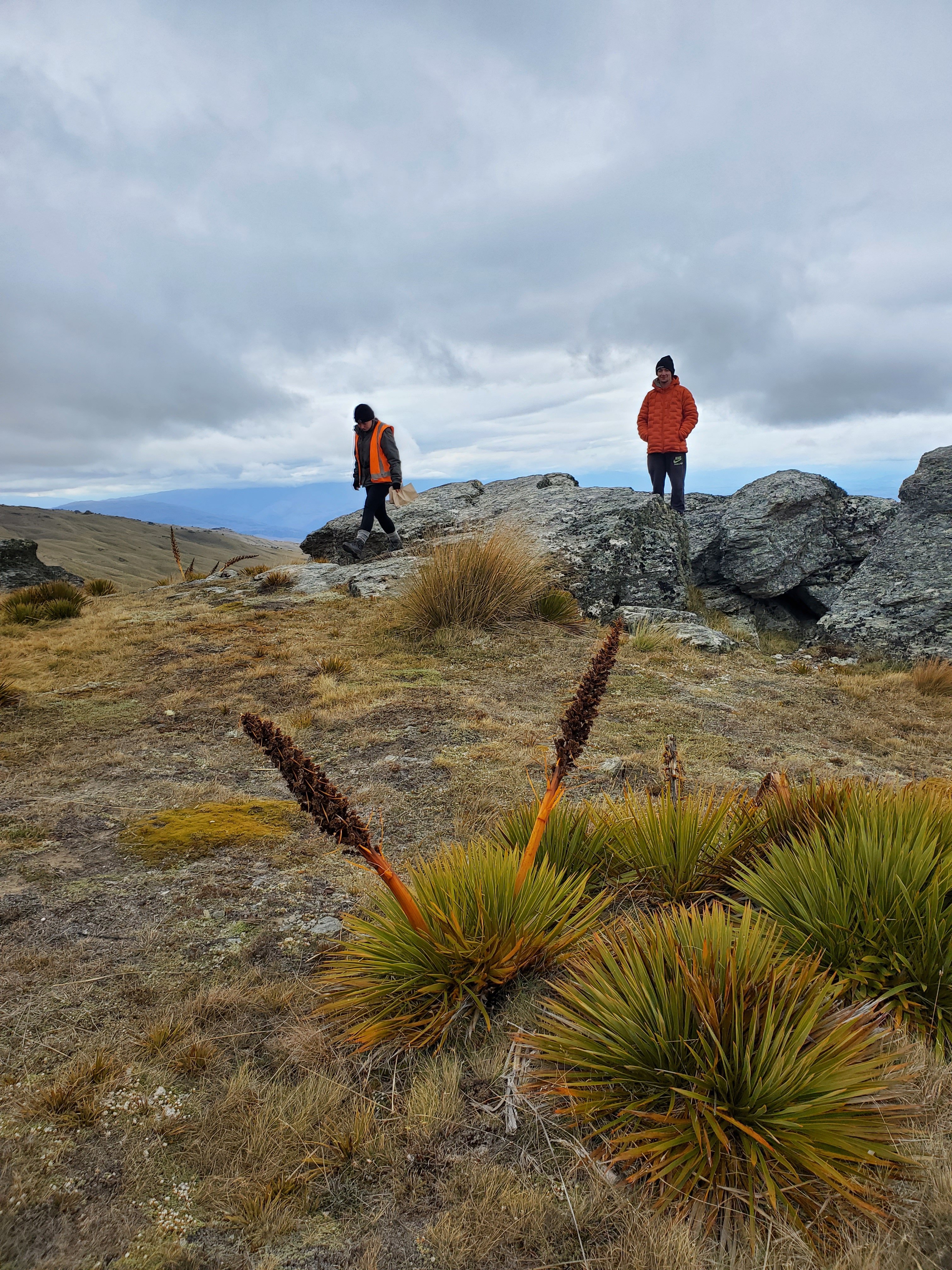
Every day at the Dunedin Botanic Garden, staff are involved in the work of plant conservation. This includes not just threatened species, but also more common ones required for public display and education.
The work also extends beyond the boundary of the garden’s grounds.
In one recent trip, staff ventured into the Old Man Range, in Central Otago, to find and collect seeds and cuttings to extend the treasures nurtured in Dunedin — in this case for adding to the garden’s new mini-mountain display.
There were strict guidelines for the work, set out in a Department of Conservation (Doc) authorisation, which, among other things, placed limits on the quantity and type of material that could be collected.

Garden apprentice Jess Freeman was part of the team on the trip and says the limits are crucial to ensure the plants can continue to regenerate and thrive in their natural habitat.
"It’s great to know that while we’re gathering these specimens to grow, we’re also being mindful of the long-term health of the ecosystem."
The destination for the trip was the Kopuwai Conservation Area, near Alexandra, in the Old Man Range.
On the day, cloud clung close to the hills, limiting visibility. Even still, as staff made their way up the mountain, changes in the plant habitat were immediately obvious.
Having started in country dominated by tussocks swaying in the chilly morning breeze, the team ascended into a rockier landscape in which plants shrank dramatically in size.

"The fog added an eerie, sci-fi movie vibe to the scene, especially as we passed rock tors and expanses of rocky soil. It was the kind of place you’d expect to find aliens or at least a cool plot twist," Freeman says.
At the top, where the 26m rock tor Kopuwai, or the Obelisk, stands, it was time to focus on the business of locating native species.
"We took our time to familiarise ourselves with the range of plants in this rocky, fog-filled wilderness. Sometimes scratching our heads, but that’s part of the fun."
One of the most memorable finds was Myosotis pulvinaris, she says, which was producing its little white flowers despite the challenges of the alpine environment.
M pulvinaris, or "mountain forget-me-not," is known for its resilience, adapted for its niche in such rocky and windswept environments.
"I love how it is a little reminder that even in the toughest conditions, nature still finds a way to thrive," Freeman says.
The team’s next find was Craspedia lanata, which look like something you’d expect to see at the bottom of the ocean rather than in the mountains, she says.
"Craspedia lanata — also known as woollyhead — has these cute round flower heads, and spotting these in their natural environment felt like finding treasure."
By the time they had exhausted the day, the botanic garden team had managed to collect a more than worthwhile haul of specimens from the area, including divisions, cuttings and seeds.

After a life-saving coffee break in the Old Man Range’s blistering cold, the team moved back down the mountain, experiencing the same noticeable shift in habitat, but in reverse. The tussock returned, accompanied by the other plants of the lower slopes.
That being the case, there were more finds to be made.
There were seeds from Melycitus alpinus, a native shrub with small clustered flowers that attract bees and other pollinators.
"I found one growing in between two slate rocks on the ground and about 6cm tall instead of its bushy form. Almost growing like moss would in a gap. Very resilient!" Freeman says.
Had the team not collected Acaena saccatipula seeds, the plant may well have helped collect itself. The plants have prickly seedheads that can stick to clothing — their secret weapon for spreading around.
Another Celmisia species joined the day’s collection, this time Celmisia argentea seeds. Its silver leaves make it stand out, like something straight from a frosty wonderland. Argentea means "silvery", so it is well named.

"A stunning alpine plant with sharp, spiky leaves and golden flower heads," Freeman says. "It is like nature’s own version of a defence system. Wouldn’t want to fall into one!"
Each collection was placed in a labelled bag for safe keeping. Clean tools were used during collection as a general precaution against spreading disease in the environment.
Back at the botanic garden, the team prepared a free-draining potting mix similar to what would be used with growing succulent plants in the garden’s care.
The mix consists of four parts of the garden’s standard pine bark mix, one part sand, one part perlite and one part gravel. The seeds were gently sown on top of the mix in seedling pots and lightly covered with a thin layer of gravel to protect them.
The cuttings and divisions were potted into terracotta pots and placed deep into the garden’s outside sand bed, which regulates temperature in a similar way to their natural environment, while the porous terracotta allows water to escape.
The softer and more vulnerable cuttings were planted into tubes, in the same mix, and placed in a propagation house close to the misting bench. They will be potted up when they get established.











